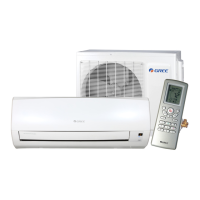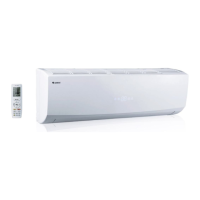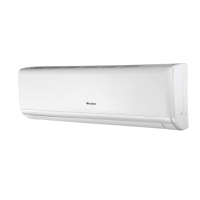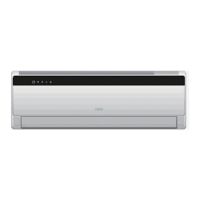Refrigerant Venting
In order to open the refrigerant cycle (for any repair, replacement of parts and
subsequent brazing or tube joining with pressing connections) the total R-290
refrigerant charge has to be removed from the system.
Venting can be carried out as an alternative to recovering the refrigerant. If vent-
ing is considered, it should be done in accordance with the relevant national
laws.
Normally, venting is only carried out with systems that contain a small quantity
of refrigerant, larger quantities should be recovered.
If venting is to be carried out, a set of special procedures is required to ensure
that it is done safely, by following the general safety procedures and through
appropriate use of a suitable hose.
Important Notes!
1. Venting inside a building is not permissible under any circumstances.
2. Venting must not be to a public area, or where people are unaware of the
procedure taking place.
3. The hose must be of sufficient length of about a minimum of 5 m
4. The hose should have a minimum of 12mm (½”) internal diameter
5. Venting should only take place on the certainty that the refrigerant will not
get blown back into any adjacent buildings, and that it will not migrate to a
location below ground level
6. The hose is made of material that is compatible for use with HC refriger-
ants and oil
7. A device is used to raise the hose discharge at least 1 m above ground
level so that the discharge is pointed in an upward direction (to assist with
dilution)
8. Close to the inlet of the hose, an oil separating device is fitted to present
the emission of refrigeration oil, so that it may be collected and disposed
of properly following the venting procedure (a recovery cylinder may be
used for this)
9. There must be no sources of ignition near the hose discharge
10. A flammable gas warning sign must be positioned close to the hose dis-
charge
11. The hose should be regularly checked to ensure that there are no holes or
kinks in it that could lead to leakage or blocking of the passage of flow
12. When carrying out the venting, the flow of refrigerant should be metered
using manifold gauges to a low flow rate, so as to ensure the refrigerant is
well diluted.
13. The venting process has to be monitored for the entire time.
14. Once the refrigerant has ceased flowing, the system must be flushed out
with OFDN; if not, then the system should be pressurised with OFDN and
the venting procedure carried out two or more times, to ensure that there
is minimal HC refrigerant remaining inside the system.

